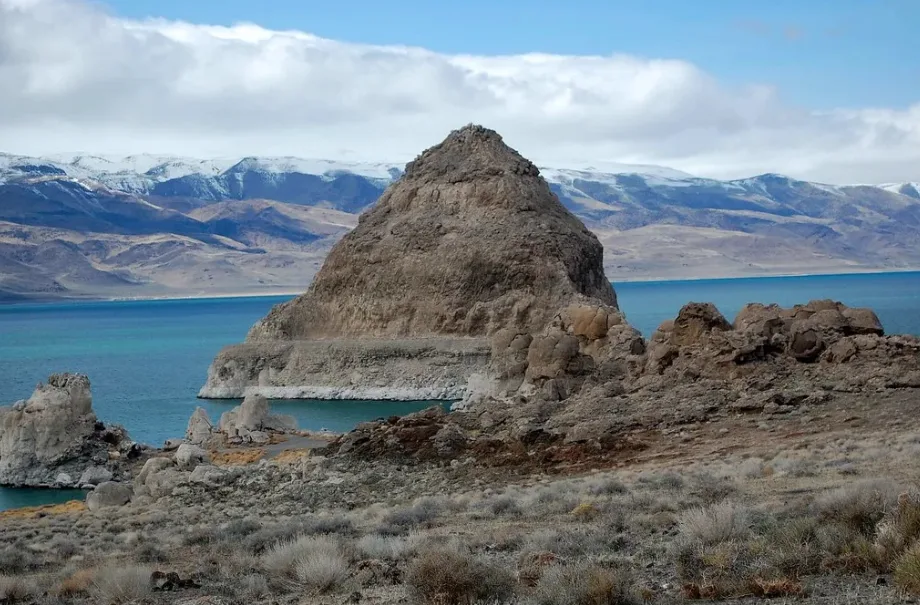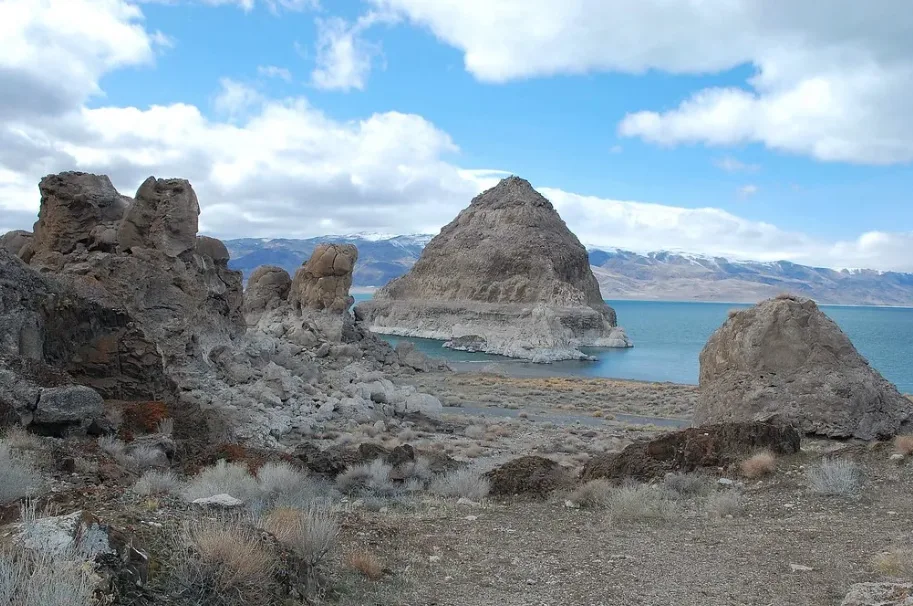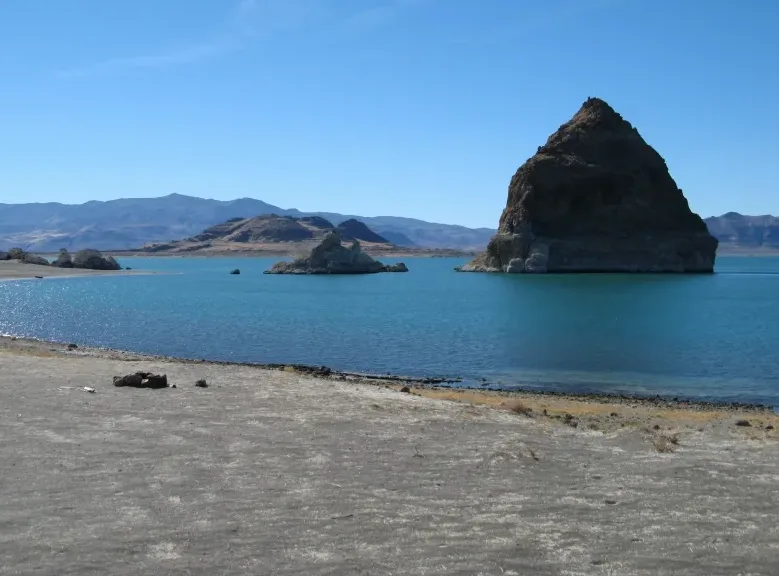Nestled in western Nevada near the California border, Pyramid Lake is a striking remnant of the ancient Lake Lahontan, a massive body of water that dominated the region during the last Ice Age. Formed under a cooler, wetter climate, Lake Lahontan once sprawled across much of western Nevada and into California, encompassing seven smaller lakes, including Pyramid Lake and the now-dry Lake Winnemucca. At its peak around 15,000 years ago during the late Pleistocene, this vast lake was a defining feature of the prehistoric landscape.

A Geological Treasure

Pyramid Lake, the deepest surviving remnant of Lake Lahontan, captivates geologists with its dramatic calcium carbonate formations, known as tufa. These striking structures, which give the lake its name, include a pyramid-shaped deposit formed by the precipitation of calcium carbonate from spring or lake water. Tufa takes on diverse shapes—mounds, towers, sheets, and reefs—sometimes encasing other rocks in intricate patterns. These formations become visible when water levels drop, a phenomenon driven by shifting climates or human water diversions, as seen at California’s Mono Lake.

The lake’s tufa deposits are a testament to the dynamic interplay of geology and environment, offering a window into the region’s ancient hydrological cycles. They stand as silent sentinels, shaped over millennia and exposed by the retreat of waters that once filled the basin.
A View from Space

Captured in a stunning astronaut photograph (ISS025-E-5259) taken on September 28, 2010, by the Expedition 25 crew aboard the International Space Station, Pyramid Lake reveals its beauty from above. Using a Nikon D2Xs camera with a 180 mm lens, the image showcases sunglint—light reflected off the water’s surface—at the lake’s northern and southeastern ends. At the northern end, two large spiral whorls shimmer in the sunglint, likely caused by wind disturbing the water and altering light reflection patterns. Enhanced for contrast and clarity, this image, provided by NASA’s ISS Crew Earth Observations experiment and Image Science & Analysis Laboratory, highlights the lake’s unique features and its place in Earth’s story.

A Legacy of Change

Pyramid Lake is more than a scenic wonder; it’s a living record of environmental transformation. As Lake Lahontan’s waters receded, shaped by climatic shifts and, more recently, human activity, Pyramid Lake endured as a vital ecological and cultural site. Home to the Pyramid Lake Paiute Tribe, it holds deep significance beyond its geological allure, supporting unique species like the endangered Cui-ui fish and serving as a hub for recreation and study.

This astronaut’s snapshot reminds us of the planet’s dynamic past and the forces—natural and human—that continue to shape it. Want to explore more of Pyramid Lake’s wonders or see other astronaut-captured views of Earth? Check out NASA’s Gateway to Astronaut Photography of Earth or browse X for the latest discussions on this geological gem. Share your thoughts below—have you visited Pyramid Lake or marveled at its tufa towers?


